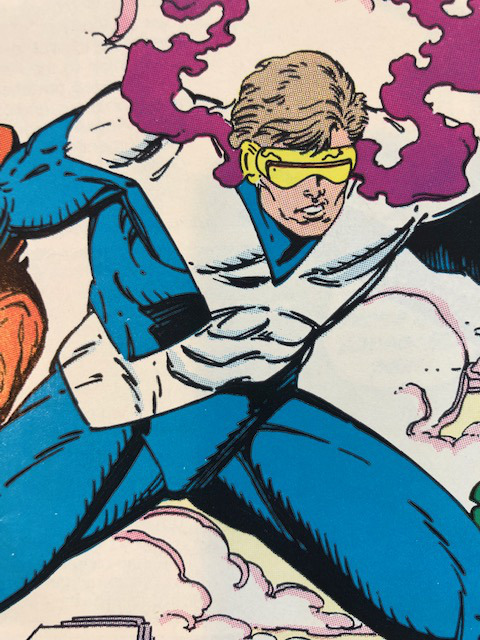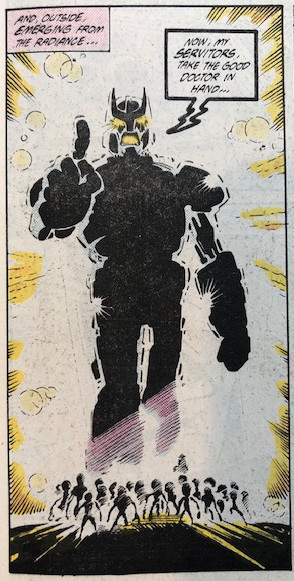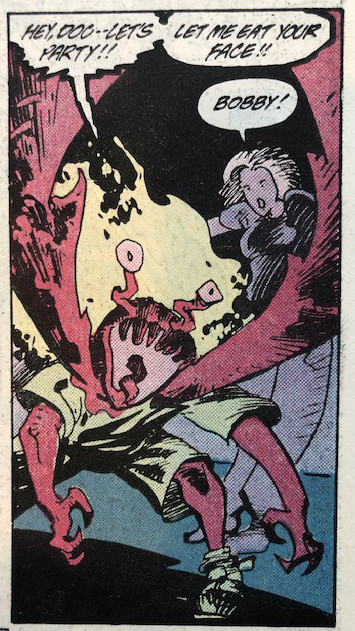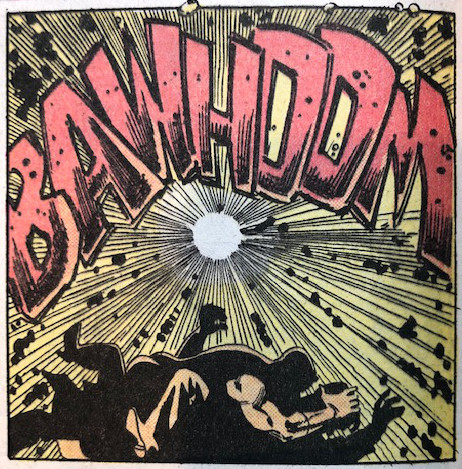

Marvel Comics Presents ran for 175 issues from 1988 until 1995. Each issue included four eight-page stories with typically two or three on-going features (and no ads). It spotlighted some of the leading creators of mainstream comics over a period of precipitous economic growth and even more rapid decline. Reading through it is an opportunity to revisit any number of weird aspects of 90s superhero comics. This blog is a primitive, oddly regimented, manifestly scattershot crawl through an often disappointing but occasionally splendid comic. All image copyrights are Marvel's. Issue credits linked below. Updated on Wednesdays.
Marvel Comics Presents #19: Late May 1989(1.29.20)
Credits: grandcomicsdatabase

Fun fact about MCP: despite its stretch of Weapon X stories, none of its issues are really worth anything on the collector's market. (This is, of course, good news for those of us interested in simply getting our mitts on the series.) So, to damn with faint praise, I'll note that this issue is the "most valuable" of the series--apparently on account of the first appearance of Damage Control. A Near Mint condition can (at least on one site) fetch around $11. Heady stuff, but oddly fitting given the Big Liefeld Energy Cyclops. It's a study in odd contrasts, though: Craig Russell's nifty inks do the invisible work of preserving the Adams-ish clarity of the piece, but, once you notice Cyclops' necklessness, it's a typically Liefeldian error: one you really can't unsee.

A. Cyclops, "The Retribution Affair" [3/8]
Master Mold sets a horde of minions upon a hospital in an effort to abduct Mary and Banshee, each of whom is infected with the Retribution Virus. Since the minions are styled as small grey aliens, there's a unmistakeable and fairly effective alien abduction feel to the proceedings, helped along by heavily backlit shots. Those panels, along with some fantastic metallic textures on Master Mold, are nicely finished by Bruce Patterson. The bubbly, larval feel to the hordes of critters makes for a neat counterpoint to the lustrous surfaces that Lim and Patterson pull off throughout. Story-wise, I suppose we're keyed up for a climactic Cyclops-Mold showdown, but there's no longer any real curiosity here. Or any narrative appeal for that matter.

B. Black Panther, "Panther's Quest" [7/25]
Strange choices mark a lull in a continuing feature that's been consistently energetic up to this point. Three pages are marked by empty, blacked out panels that suggest a hiccup in the layout process. The title of the installment, "Battered Artifacts," embedded in the scenery, is almost entirely obscured. We're also treated to two pages of T'Challa remarking upon a dead dog from four installments prior and--wait for it--a full page of Slade's wife dusting. Inertia is sacrificed here and there's little evidence of a meaningful deepening of context or stakes. While this is a chance to take a bit of stock and a functional set-up for the next installment, this just feels like a throttled Colan outing.

C. Doctor Strange, "Nightmare in Suburbia" [1/2]
Nicieza assembles a barebones scaffolding that's instantly transformed into something near-remarkable by Mark Badger who leans into one of the wilder styled features we've yet seen in MCP. Badger's scratched out, suggestive line work gets paired up with some resonant Nowlan-esque imagery and some vaguely punk color work by Robbie Busch. There are a few ways in which this seems to mark the increasing aesthetic influence of the Vertigo books--the domesticity themes in the story and, more formally, the bright pinks, heavy purples, and other neons.

Dr. Strange barrels into a demonic infestation that melts into a showdown with a litany of inventively rendered critters set against bugf*ck impressionistic backgrounds and some sharp screentone effects. Lovely work and, if these features are conceived of as primarily artist showcases, this about as on point an outing as we've seen.

D. Damage Control, "Overture"
McDuffie's Damage Control is a comedic gem of the early nineties, given its deep continuity ties and its willingness to slow boil jokes over entire issues. It's thoughtful riff on corporate sitcommery is, in many ways, the most forward looking comic that still gets overlooked in critical retrospective. Here, Ernie Colon deftly opposes the slick body language of Mr. Porter and an escalating Daredevil brawl, which will--after a bundle of slapstick punch-up-- precipitate a visit by Damage Control and the subsequent recruitment of Porter.

While the Daredevil here is only passable, there's Al Williamson inks and so a bunch of fun effects and subtle touches throughout. (Note the Pete Morisi blacked abstraction panel background and the lovely work on the explosion panel.) The lone (but pretty much unforgivable vice): it ain't even close to fun. And, in that regard, it makes for a poor teaser for the series.
Power Ranking: Doctor Strange (A-), Cyclops (B-), Damage Control (C+), Black Panther (C+)